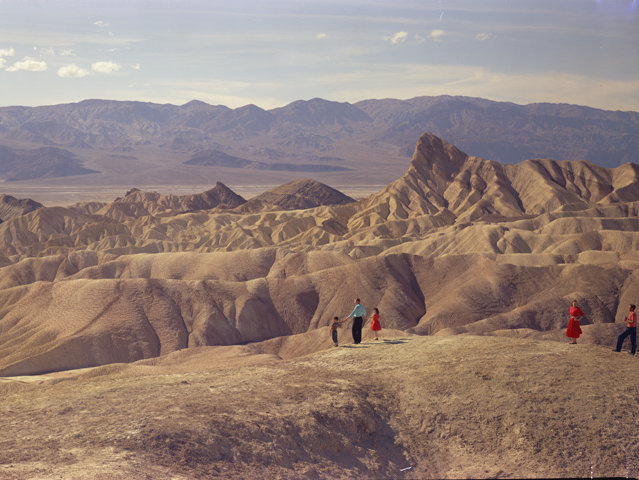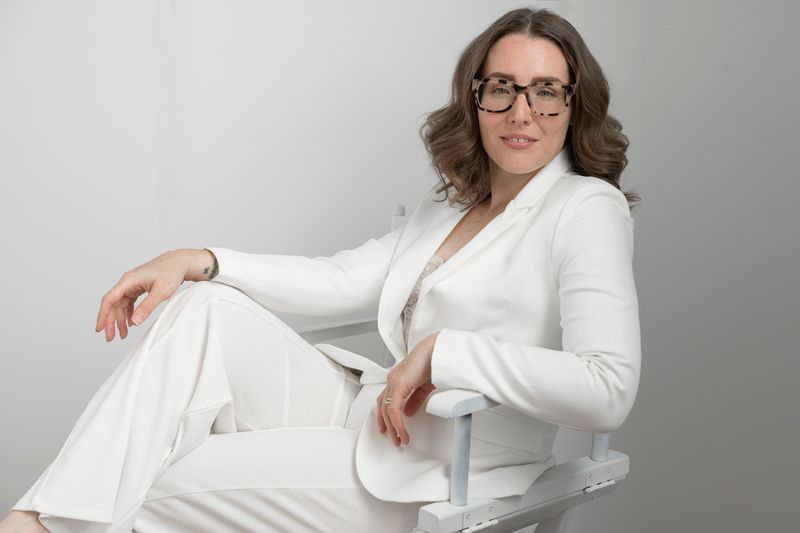In 1935, Conde Nast – which had made a major commitment to the use of color photography in its magazines – published a promotional booklet called, "Color Sells." One spread in the magazine was emblazoned, "Color Opens the Pocketbook."
Certainly, Milwaukee Art Museum hopes its latest exhibit has the same effect on consumer spending, and, by rights, it should.
"Color Rush: 75 Years of Color Photography in America," which opened Friday and runs through May 19 in the museum’s main galleries, is a fascinating show that traces the development of color photography and shows how the technology opened up new worlds for art photographers, but also for printed magazines and for hobbyist and casual photographers, too.
It’s a linkage between fine art, commerce and everyday folks that is rarely addressed in exhibitions.
The show was curated over a six-year period by former Milwaukee Art Museum photography curator Lisa Hostetler – now at the Smithsonian – and Katherine Bussard, who is associate curator of photography at the Art Institute of Chicago.
The exhibition kicks off in 1907, says Bussard.
"1907 marks the moment at which you could actually go and purchase a color photographic process that was simple enough that anyone could do it," she says.
"It was called the autochrome. Prior to that it was more elaborate processes or hand painting. So that urge for color had been around since the beginning of photography but 1907 is the moment that hobbyists, amateurs and professional artists alike to go access a process that would create an automatic color image."
Indeed the first works visitors see upon making their way beneath a sprawling, backlit Ansel Adams Colorama image and through the opaque exhibition entry are a handful of autochrome works made by landmark Photo-Secession photographers Edward Steichen, Alfred Stieglitz and Frank Eugene. Here, the photographers made a series of images – viewed with backlighting and a mirror – that have quite a painterly look.
But in no time National Geographic got behind color photography, which it began including in every issue at the dawn of the 1920s. By the ‘30s, Conde Nast was on board, and color images began to appear in magazines, books and other printed materials.
By the time World War II began, Kodak had created consumer color technologies, putting color film into the cameras of everyone who wanted it. Hollywood, too, began to use color at this time, too.
In this section of the show we see a great collection of nine prints of Steichen’s bouquet of flowers. Steichen began with a simple still life of flowers in a vase, but then experimented with different printing techniques to explore the results that could be achieved. Looking at these tests offers a fascinating glimpse into the exploratory nature of color photography during this era.
The final room shows works from the 1960s and ‘70s, when more abstract works began to appear and contemporary artists pushed the boundaries of the medium.
So, 1907 plus 75 years does not bring us to 2013. Why did the curators decide to cap the show more than 30 years ago?
"The end date, 1981, marks the landmark exhibition and catalog, 'The New Color Photography' by Sally Eauclaire," says Bussard. "That exhibition appeared in New York City and the catalog was widely distributed. In putting this show together, I’ve talked to a number of artists who remembered buying that catalog and saying, "I totally remember the day that I saw that catalog and brought it home.
"By 1981 color photography, and photography itself, had arrived in the art world and the debates that had been ongoing prior to that time sort of quieted and photography became a very accepted part of contemporary art practice."
With a handful of slideshows running throughout the exhibition (including one with a series of color photos taken during the Depression era) – along with stunning images in each section of the show – "Color Rush" is just that. It’s a rush of color to the senses. But the show is more than banal flash.
"This exhibition gives form to the fascinating dialogue that always surrounded American color photography," says Bussard. "Together, Lisa Hostetler and I set out to rectify the problematic – if prevailing – notion that color photography prior to the 1970s was either amateur or
commercial and only recognized as such. The historical reality was never that simple, never so definitive."
Born in Brooklyn, N.Y., where he lived until he was 17, Bobby received his BA-Mass Communications from UWM in 1989 and has lived in Walker's Point, Bay View, Enderis Park, South Milwaukee and on the East Side.
He has published three non-fiction books in Italy – including one about an event in Milwaukee history, which was published in the U.S. in autumn 2010. Four more books, all about Milwaukee, have been published by The History Press.
With his most recent band, The Yell Leaders, Bobby released four LPs and had a songs featured in episodes of TV's "Party of Five" and "Dawson's Creek," and films in Japan, South America and the U.S. The Yell Leaders were named the best unsigned band in their region by VH-1 as part of its Rock Across America 1998 Tour. Most recently, the band contributed tracks to a UK vinyl/CD tribute to the Redskins and collaborated on a track with Italian novelist Enrico Remmert.
He's produced three installments of the "OMCD" series of local music compilations for OnMilwaukee.com and in 2007 produced a CD of Italian music and poetry.
In 2005, he was awarded the City of Asti's (Italy) Journalism Prize for his work focusing on that area. He has also won awards from the Milwaukee Press Club.
He has be heard on 88Nine Radio Milwaukee talking about his "Urban Spelunking" series of stories, in that station's most popular podcast.







